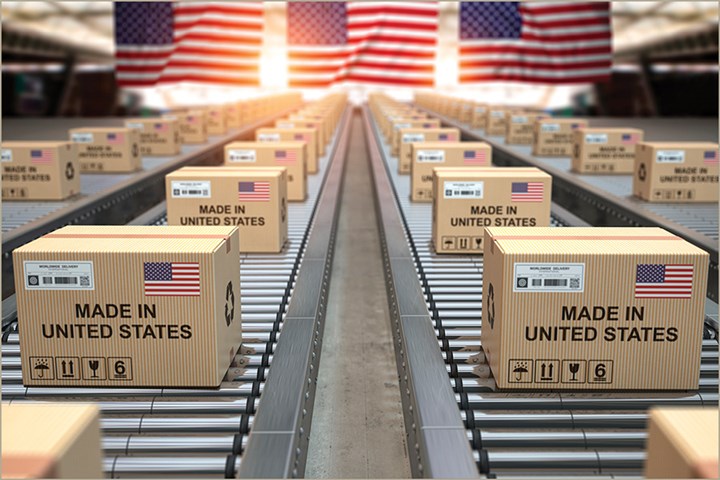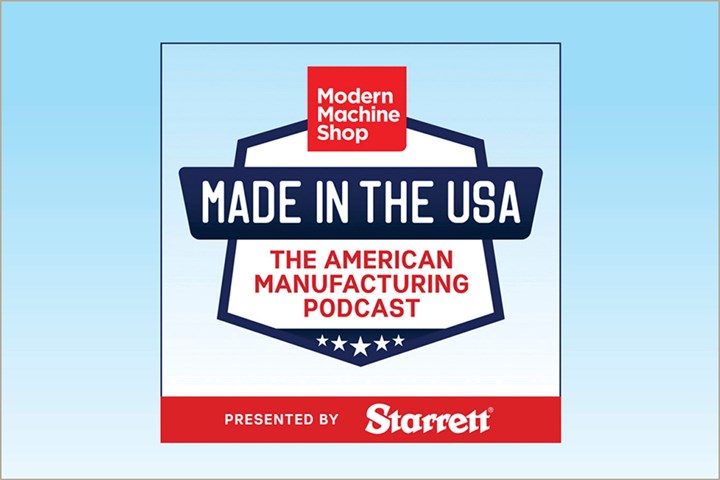An American Manufacturing Story
For manufacturers that choose to move or keep production in the United States, what are the challenges and opportunities that motivate them? And how does it impact marketing?

The central charge of the Federal Trade Commission (FTC) is to protect American consumers and the public at large from deceptive business practices, including but not limited to “unfair methods of competition,” according to the agency’s mission statement. One of those deceptive practices involves companies that claim to make or sell products that are “Made in the USA” when, in fact, they are not.
A recent survey by the Reshoring Institute found that nearly 70% of Americans say they prefer and would pay up to 20% more for American-made products. Given that Americans have repeatedly stated their preference for domestically produced goods, the FTC’s battle against this deceptive practice is a serious and monumental task.
With the stakes so high, you might assume that the FTC’s written requirement for what constitutes an American-made product would be less squishy than it is. The agency’s standards for unqualified “Made in the USA” claims are as follows:
Featured Content
Machining Questions? Ask the Expert
Made in the USA - Season 2 Episode 3: The Robots Come Home
Benchmarking: An Invaluable Business Tool
“For a product to be called Made in USA, or claimed to be of domestic origin without qualifications or limits on the claim, the product must be ‘all or virtually all’ made in the U.S. . . . ’ All or virtually all’ means that all significant parts and processing that go into the product must be of U.S. origin. That is, the product should contain no — or negligible — foreign content.”
It should be noted that the FTC does not proactively investigate potentially false claims. The agency relies on consumers to report suspected violations, and there is a healthy market for the litigiously minded who suspect a company of being in violation of the standard.
Intentional Choices
When it comes to the metalworking universe of Modern Machine Shop, you may be aware that the United States used to be the number one producer of machine tools in the world. Readers may also be aware that, while that status has slipped a couple of notches over the past few decades, the country is in a positive rebuilding period — not just for machine tool production, but for the manufacturing sector at large and its contribution to the nation’s GDP.
“The motives to produce in the U.S. span from tradition and patriotism to intellectual property theft and supply chain issues.”
These are the topics that colleague Peter Zelinski and I have been investigating as part of our “Made in the USA” series — a documentary-style podcast series that began publishing its second season of episodes in late January. Season one took a deep dive into major events and topics that shaped U.S. manufacturing and metalworking from the late ’90s to today, including the loss of manufacturing jobs in the early 2000s, myths and truths about machine tool automation, the coming “silver tsunami,” a way forward for manufacturing, and several other topics.

The new season of the show has a different focus. Today we are focused on a simple question: What do we mean when we say that something is made in the USA? Specifically, what are the intentional choices that machine shops and machine tool OEMs make so they can keep production in or move production back to the United States?
The answer has nothing to do with FTC regulations, which are important and necessary. The deeper answers are varied and much more human. The motives to produce in the U.S. when cheaper options may be available span from tradition and patriotism to intellectual property theft and supply chain issues. On the latter topic, COVID-19 reshaped and informed our understanding about supply chains and the importance of keeping them as tight and close as possible.
Last year, we traveled to Hardinge’s production facility in Elmira, New York, and witnessed Taiwanese Hardinge employees teaching American employees how to build new models of machine tools. They used translation apps on their phones to communicate and generally seemed to be enjoying themselves and making fast progress.
To make this moment possible, the company had to refine and execute a years-long strategic plan to shift production, or “repatriate,” two of its major product lines from its Taiwan plant to the United States. We talked to several executives and senior staff at the company to learn how they formulated the plan. We asked about challenges along the way and the rewards that made it worth the effort.
A related example: If a global company based in the United States operates a major production facility in China, does it necessarily mean the company is sacrificing American jobs for lower wages? The answer is no, and the question itself assumes that China is a “low-cost” option to produce American goods, which for many industries in 2023 is a dubious claim at best.
If you are interested in these topics — the motives behind moving or keeping production here, and the challenges and opportunities facing the U.S. metalworking industry — I invite you to listen to the new season of “Made in the USA.”
If you have feedback or suggestions, please send an email to me at bdonaldson@mmsonline.com.
Need more information?
Brent Donaldson, Editor-in-Chief
Modern Machine Shop
Contributing Editor, Additive Manufacturing
Gardner Business Media
LinkedIn
Twitter
About the Author
Brent Donaldson
Brent Donaldson is Editor-in-Chief for Modern Machine Shop, where he is oversees the brand’s writing staff as well as day-to-day management of editorial operations. Brent also serves as a columnist and feature writer and reports regularly about his travels to machine shops, trade shows and conferences around the country and internationally. Brent is also co-host, producer and editor of Modern Machine Shop’s documentary-style podcast, “Made in the USA.”
Before joining Gardner, Brent was editor-in-chief of Northern Kentucky University Magazine — the same university from which he received his journalism degree in 2005. Brent previously served as associate editor for Cincinnati Magazine, and is the recipient of two Ohio Excellence in Journalism awards for feature news writing, Cincinnati Society of Professional Journalists awards, and more than 40 individual awards from the Council for Advancement and Support of Education for writing and editorial.
Fun fact: Brent was the last journalist ever to interview Evel Knievel.
RELATED CONTENT
-
Numbers Don't Lie
In manufacturing, mathematics is a defining element. In fact, much of the innovation that manufacturing has introduced is the result of a solid foundation in mathematics. Mauricio Pineda, Associate Editor of Modern Machine Shop Mexico writes about how mathematics is fundamental to information analysis in manufacturing.
-
How Best-Practice Segmentation Delivers Faster and More Profitable Growth
There are many approaches to customer and market segmentation. The best method will depend on the business and its goals. This article explores 4 approaches to segmentation, 5 steps to create a successful customer segmentation model, 3 key data considerations, and 5 segmentation best practices. Note: Anyone in the Gardner community who uses GW17Lucky will receive a 17% discount on The Market and Customer Segmentation Workbook. It will only be good for this workbook and will be effective from February 20th through St. Patrick’s Day, March 17th, midnight central time. It will automatically expire at that time.
-
Finding Career Continuity Retroactively in Business Media
Matthew Stonecash, Associate Editor for Plastics Technology, found that changing careers did not have to mean starting from scratch.


